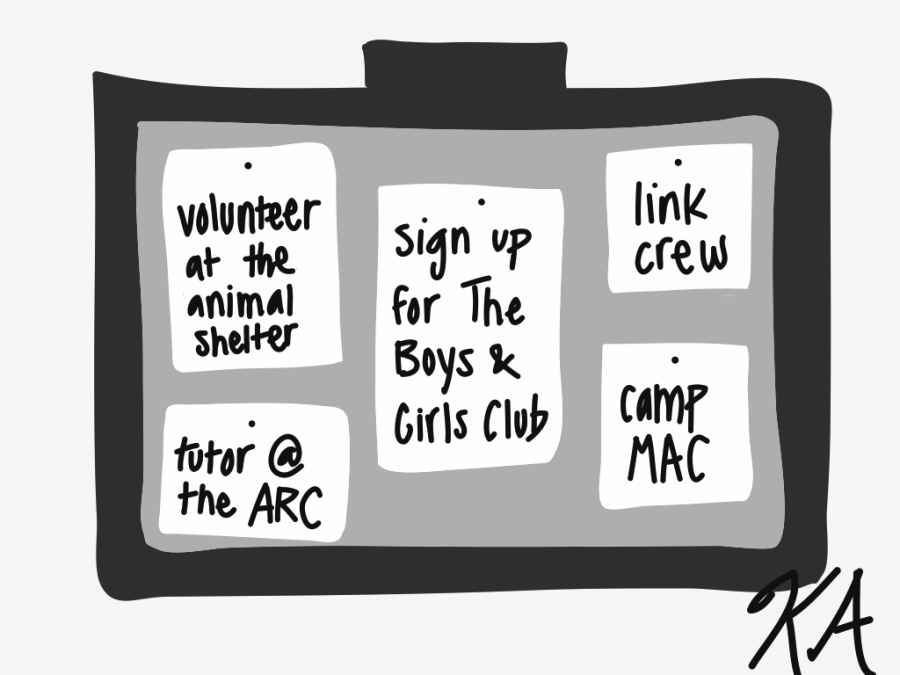Parents and peers constantly bombard high schoolers with reminders that community service, among other things, bolsters college applications and sets them apart from other applicants. However, the community service is rarely discussed in school and as such, students often miss critical opportunities to gain hours.
Community service — defined as voluntary work intended to help people or unpaid work, intended to be of social use — is described by many as having many benefits. For example, for some, community service is able to counteract the effect of stress, anger and anxiety and bring fulfillment and enjoyment to one’s life. Additionally, community service is especially valuable to high schoolers seeking skills relevant to their intended career path. Thus, it is especially important for high schoolers to seek out community service opportunities as all the aforementioned things are especially beneficial to high schoolers.
While many community service opportunities exist, oftentimes students must first go through a complex process to sign up, a daunting task for those who have never volunteered before.
Enter the words “community service” into the Google search bar and millions of websites, each boasting information about community service, pop up. However, each website is different, and nearly all sites require one to register an account and fill out a long-winded application in order to gain hours.
Story continues below advertisement
In order to help students sign up for community service opportunities, Paly should take on the responsibility of better publicizing these opportunities.
Currently, a “volunteer opportunities” Google Calendar exists on the Paly website, a bulletin near the College and Career Center, and a list of volunteering opportunities offered by Guidance and Career Vocational Education Assistant Karla Larson.
But even though Paly offers many resources for students who wish to volunteer, not many students realize these resources exist.
In order to make students aware of the resources the College and Career Center provides, an introduction to the calendar and list of volunteering opportunities should be incorporated into advisory. An additional idea to make students more aware would be to incorporate the topic of community service into an assembly.
According to Larson, community service will be covered in advisory on April 11 for sophomores and juniors and April 17 for freshman.
However, this happens at the end of the year and as such, students, in the months before April, do not have the valuable information that would help them with all things related to community service.
Furthermore, the Living Skills course, a graduation requirement, requires students to gain community service hours. Although the Living Skills teachers hand out sheets containing community service opportunities, one must be in Living Skills to receive this sheet.
This has the potential to limit a student’s exposure to these opportunities if they are not enrolled in Living Skills.
As a result, Paly students who have no hours and decide to take Living Skills as second-semester seniors may find themselves under pressure to gain their hours last minute in order to graduate.
Paly should make these sheets available to all Paly students by handing them out during advisory, preferably in the months before April. Additionally, community service ought to be a topic discussed outside of Living Skills, such as in the months before April in advisory and in assemblies, where Paly administrators well-versed in all things community service could give a presentation to students.
Currently, resources that help students with community service are not very well-konwn.
Thus, in order to fix this, Paly ought to more thoroughly incorporate the topic of community service into advisory and assemblies, and spend more time publicizing the calendar containing community service opportunities.

